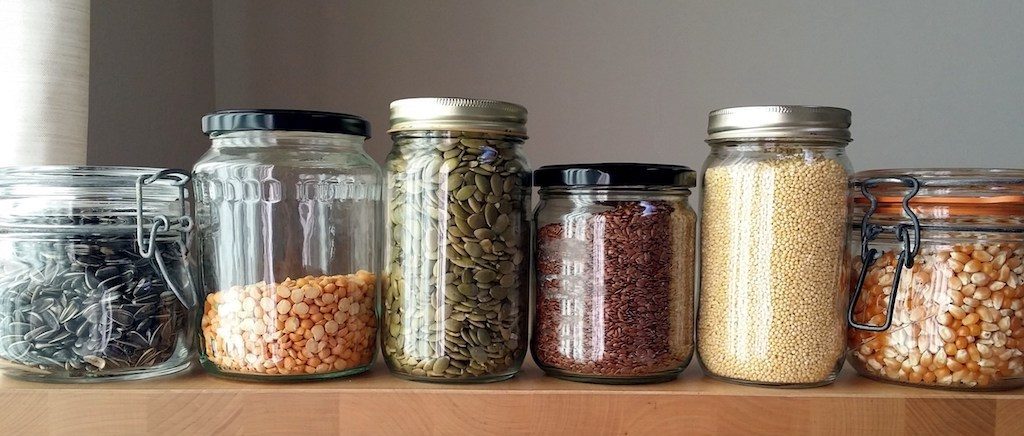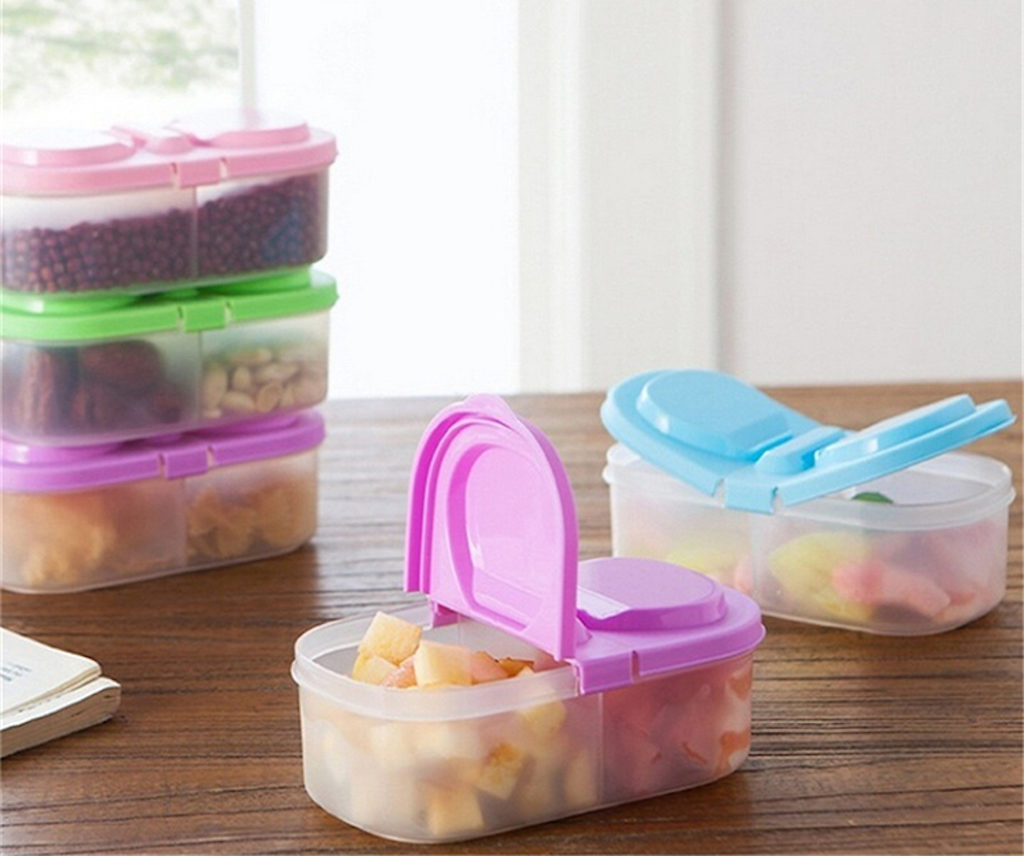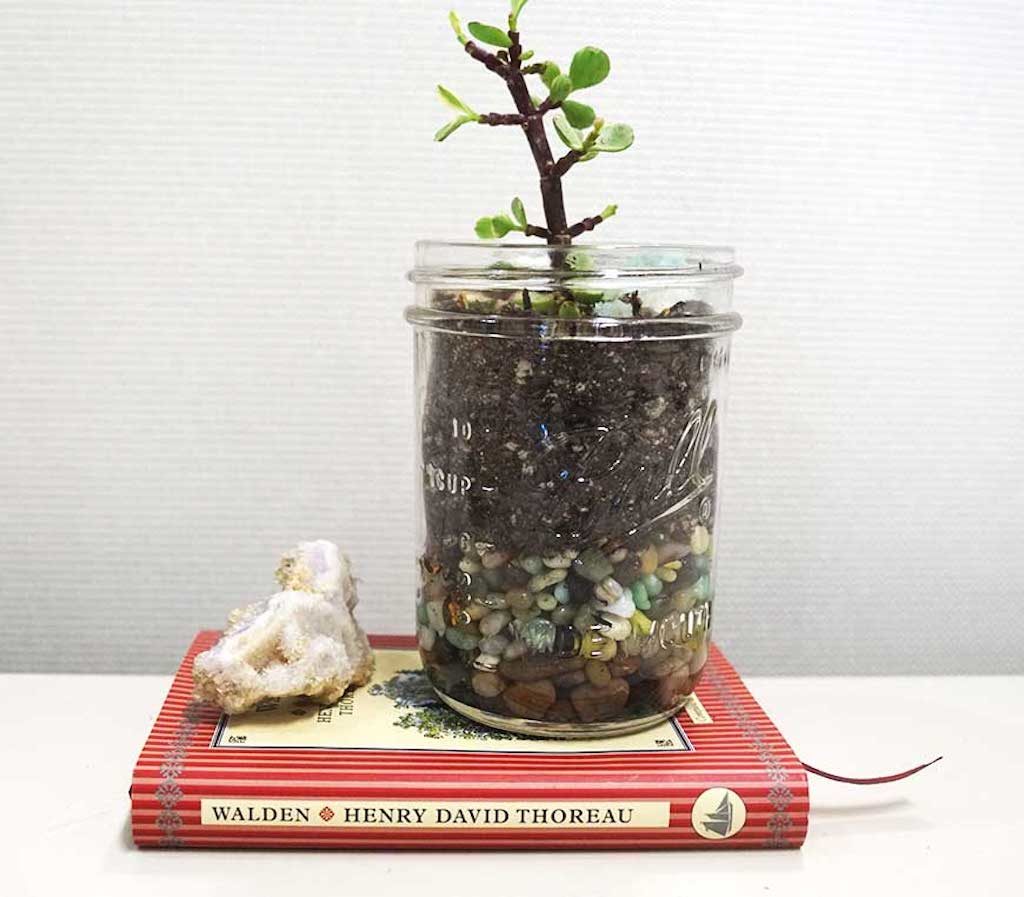7 Mins Read
When you conjure up the term zero-waste lifestyle, many of us picture Instagrammable rows of glass jars filled with bulk-bought food staples lining kitchen pantries.
But whether the obsession with glass containers is really that much better for our planet than older and less aesthetic options is a whole-nother debate that requires more in-depth research than you think!
Spoiler: The bottom line here is that that we all need to reuse, reuse, reuse, and buy only what we need.
Why Glass Is (So) Great

- Glass is 100% recyclable, and can be continually recycled without loss in quality or purity.
- It is a made from bioavailable materials like sand, soda ash, limestone, and heated to an extremely high temperature before it becomes moulded into the desired shape.
- Because of its recyclable quality, using glass reduces emissions and usage of raw materials – it can be turned into a new recycled glass object at any point.
- From a health standpoint, glass also wins over many other options as it does not absorb smells or flavours, and it does not leach any toxic substances into foods or drinks.
Not-So-Awesome Things About Glass
- Glass is not as convenient as plastic: it’s heavy and easily breakable (not ideal for kids for example).
- Glass is heavier and more fragile than plastic. This makes transportation more expensive due to increased weight and the need for packaging materials to cushion the product during transportation. A 500mL glass bottle weighs about 400g, but a comparable 500mL PET bottle, cartoon or aluminium weighs about 10g. “Two years ago, peanut giant Planters cut packaging weight by 84 percent when they switched from glass to plastic jars.”
- While glass containers suitable for food or drinks are 100% recyclable, other kinds of glass like windows, ovenware are not because they are manufactured through a different process.
- While you would think that most glass food containers would be used to make new bottles and jars, often, there’s too much contamination to meet manufacturing requirements – this means they often get turned instead to make “secondary” products like tiles, concrete and bricks.
- Much of the glass that is being used isn’t actually being recycled. In Hong Kong, we throw out 3.7 million tonnes of waste in our landfills every year, and our overall recycling rate stands at a more 34%, according to figures by HK Recycles. And while our plastic and paper recycling rates aren’t faring so well, it pales in comparison to our dismal 10% recovery rate for glass. There are many reasons for this, from poor collection infrastructure to the lack of awareness and participation and contamination.
- In addition, if the pieces of glass have been broken into too small shards for re-manufacturing, they are simply are left to decompose wherever they land. Scarily, glass pieces take 1 million years to decompose.
- Due to the high demand for glass in recent years (partly propagated by the trendiness of “zero-waste” living), more new glass containers need to be created from scratch than there are available used glass containers (that meet manufacturing guidelines) to be recycled.
- The current rate of glass demand means more sand is required than can be replenished a rate that is faster than the planet can replenish it. Globally, we are taking 50 billion tonnes of sand every year, which is twice the amount that our rivers produce in the same time frame. Commonly harvested from seabeds and riverbeds, taking sand disrupts marine ecosystems and microorganisms that depend upon it for survival, and also leaves coastal communities vulnerable to flooding caused by erosion.
- Creating new virgin glass is also an emissions-heavy process. Not only are there emissions-heavy transportation costs of the final product, the furnaces used in the manufacturing side often run on fossil fuels. It takes just under 1 litre of gasoline to make 1 kilogram of virgin glass. If manufacturers were to use 50% recycled glass content to make glass products, that would result in a 10% reduction in gasoline use, the same as removing 400,000 cars from the road per year.
Our Verdict On Glass
Despite some of the cons, we’re not saying you should ditch glass. Crucially, glass does not leach toxic chemicals, making it a great option for you to continually use and repurpose it. Use it to fill up a soy wax candle, for your bulk food shopping, keep leftovers in the fridge or to store your DIY cleaning products/beauty/skincare creams. We love glass we’re just saying:
- Reuse as much as possible what you already have rather than buying new and
- If you have to dispose of glass, clean it properly and ensure it is being properly recycled.
There Are Good Reasons Why Plastic Isn’t Cool

The health, natural and low-waste living community have long demonised plastic and for good reason. From both a health and environmental standpoint, plastic is pretty off-putting. Let’s break this down (no pun intended ;).
- Firstly, plastic is petroleum-based, a non renewable energy source. According to the United States Energy Information Administration (EIA), plastics are made from a combination of liquid petroleum gases, natural gas liquids and natural gas.
- These same non renewable energy sources pollute the air with greenhouse gas emissions, not to mention that the extraction process often leads to the contamination of rivers, topsoil and waterways with hazardous crude oils and toxic sludge.
- The demand for plastic has therefore left a massive carbon footprint on our planet. And as more plastic is being used – from product packaging to the micro-beads in certain cosmetics, the plastic production industry is generating more carbon emissions that fuel global warming and our climate emergency. In a recently published University of California study, the carbon emissions from plastic manufacturing stands at 1.8 billion metric tonnes annually.
- According to a latest world energy review conducted by BP, the surge in use of petrochemicals can be attributed to the demand for plastic materials production – and most of the demand is right here in Asia. It is estimated that China is responsible for almost 30% of global plastic manufacturing.
- It isn’t just the emissions – unlike glass, plastic is not fully recyclable, meaning that it can only be down-cycled (reproduced to a lesser quality), and will eventually turn into an item of waste that can no longer be recycled again.
- Another negative: plastic never truly breaks down, instead turning into the microplastics that have been found everywhere from our oceans and rivers to rain, drinking water and even food. While the consumption of tiny little plastic fragments has not yet been found to lead to serious complications, the WHO has reiterated that too little research has been done to confirm no health risks.
- The rate of plastic recycling is incredibly low, with only 9% of the world’s plastic actually getting recycled.
- From a health perspective, plastic is clearly the lesser option. Many of us know this, ever since the potentially endocrine-disrupting qualities of “BPA” became well-documented. This has led to a plethora of “BPA-Free” products ending up on shelves, marketed as the “safer” option that uses BP-alternatives. However, a Washington State University study revealed that even these aren’t actually any safer – the research team found that BPA-free products were still leaching toxic substances that were associated with disrupting the early phases of egg and sperm production, and this effect can be passed over to later generations.
But That Doesn’t Mean Never Using Plastic Is The Best Thing To Do
Throwing all your plastic items out isn’t necessarily the answer for our planet. Plastic is a useful resource, hence its mass adoption. Some of its key benefits as a material include:
- It’s light (glass costs more to ship),
- It’s convenient (glass is heavier and breakable),
- It’s multi-purpose (there are many types of plastic adapted to many uses), and
- It’s cheap (the reasons for why can be argued, hello oil subsidies!)
The important thing is to avoid contributing towards our global plastic crisis. Here’s how:
- Ditch single-use plastic products completely
- Reuse and repurpose old plastic items
- Recycle when possible, and
- Avoid buying new plastic.
For those bits of plastic that you no longer wish to use, properly recycle them in a recognised local facility. Plastic containers that you may have purchased years ago can also be repurposed – they can be used to store items at home or to organise shelves.
Bottom Line: Use Glass When Possible, Always Reuse & Avoid Buying New

The final verdict is: Use recycled glass whenever possible, and keep reusing and repurposing the item before you recycle glass again. If you don’t have enough glass containers, it’s okay to use your older plastic items to carry certain things (especially things that aren’t for consumption). What’s key: try your best to avoid buying new, and if you must, buy recycled glass.
Lead image courtesy of iStock / Shelby Margaret / Green Queen.




